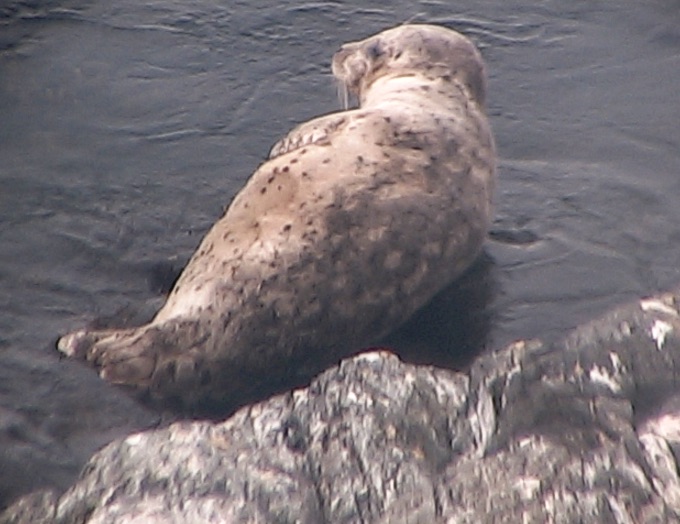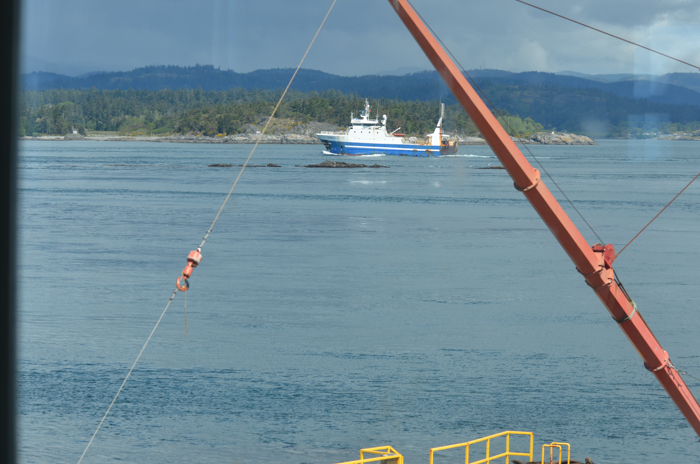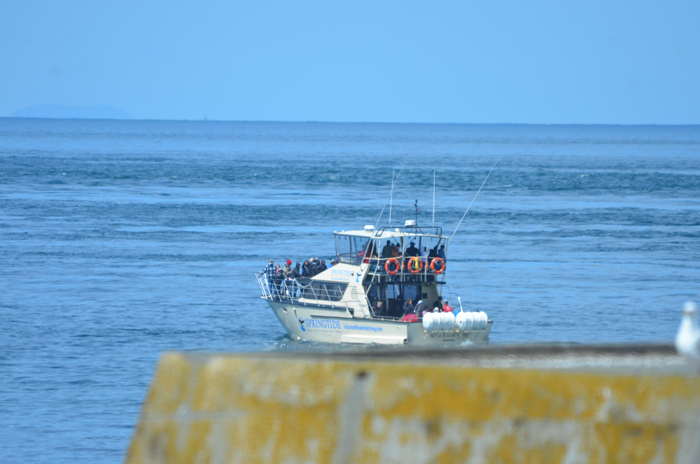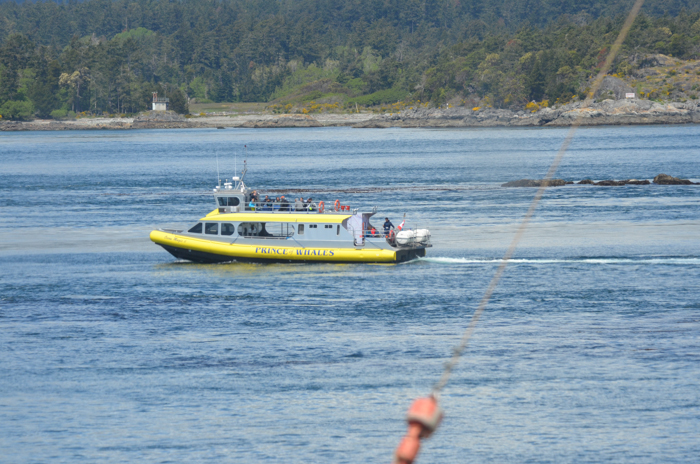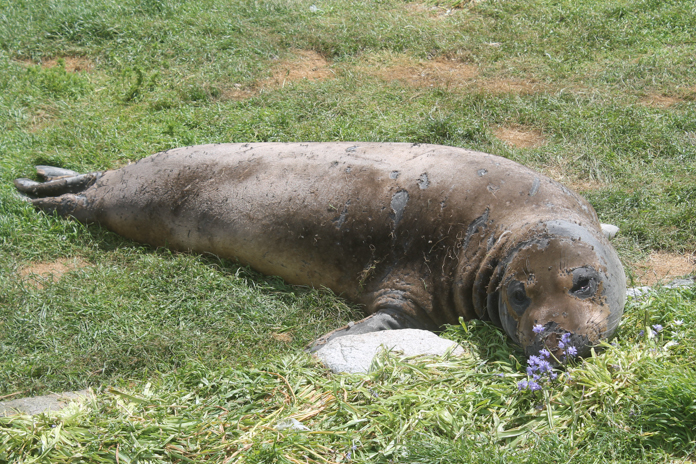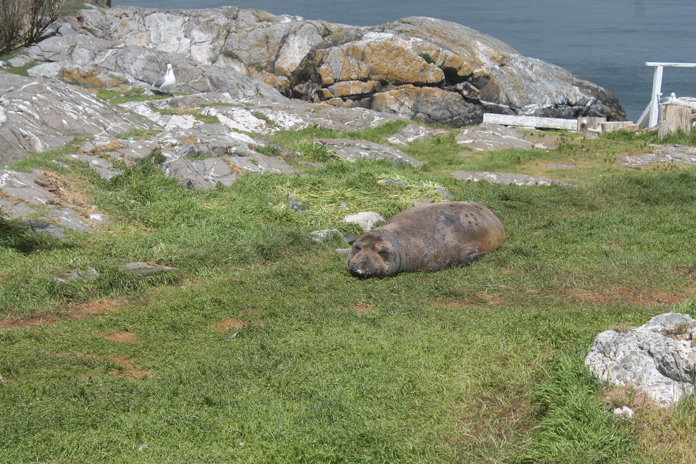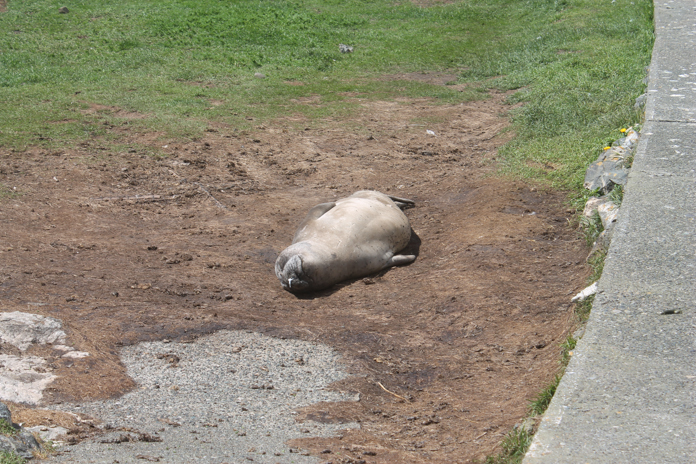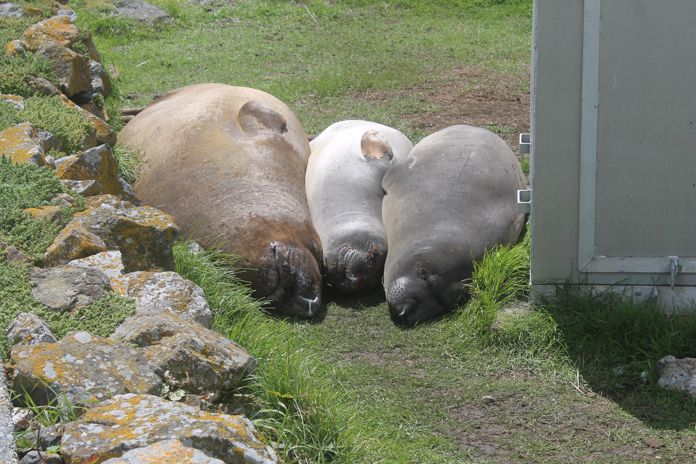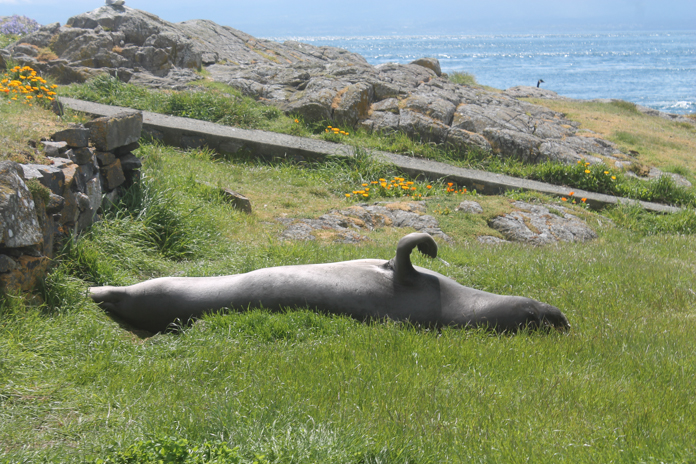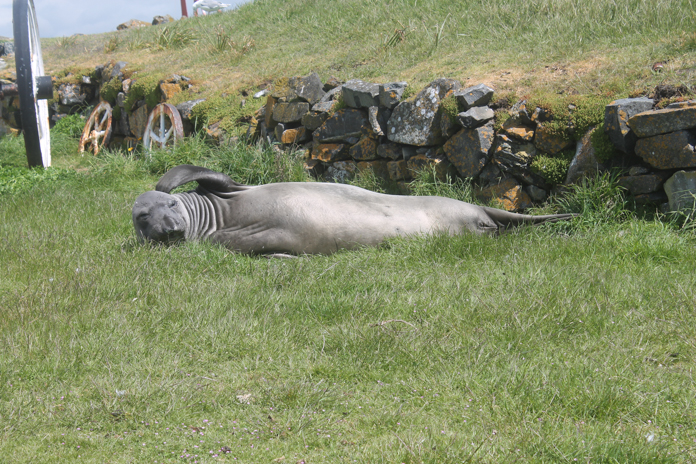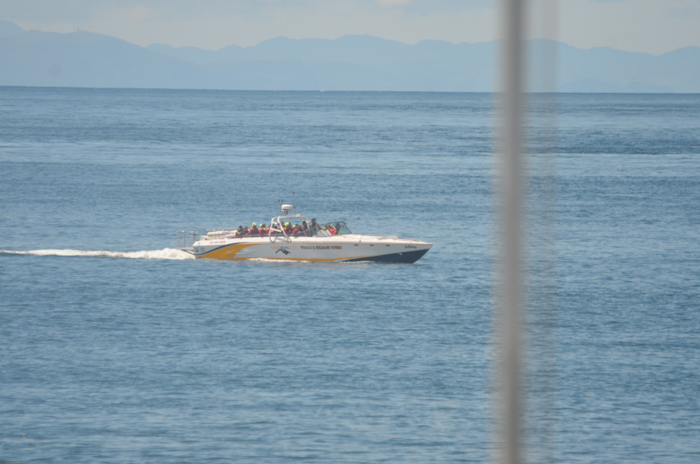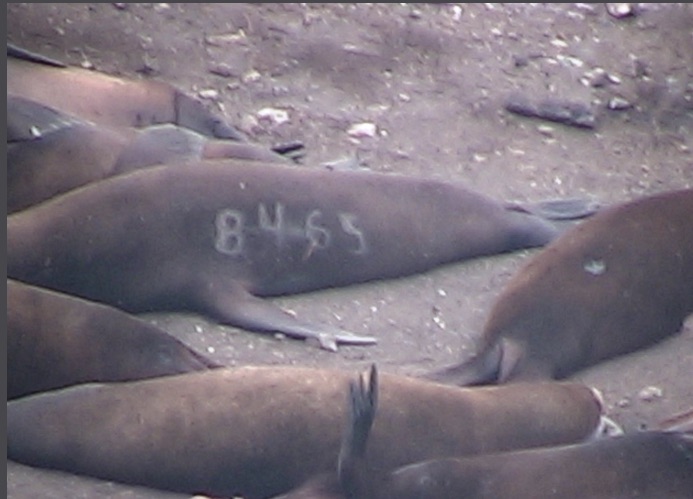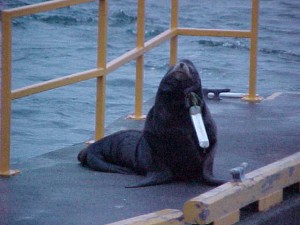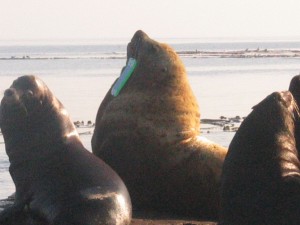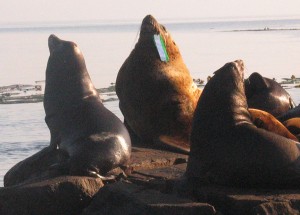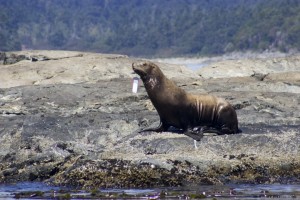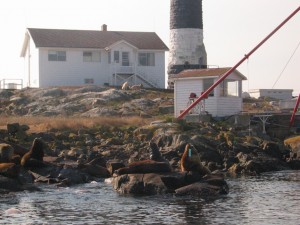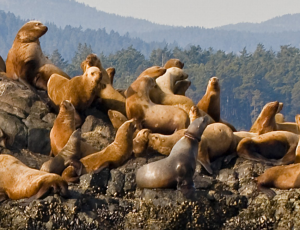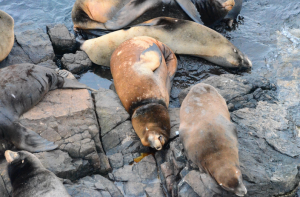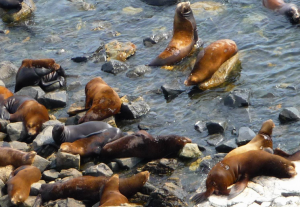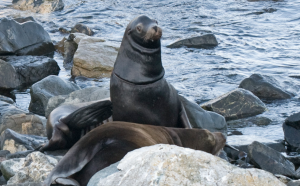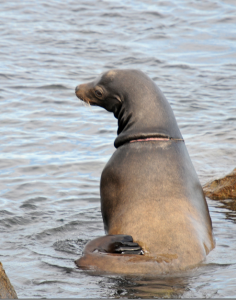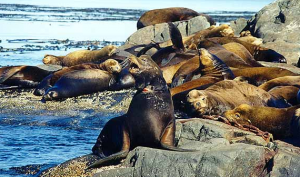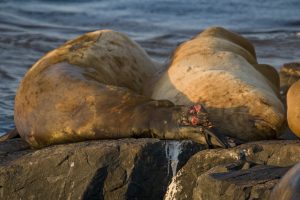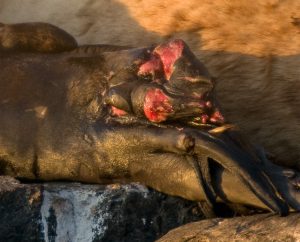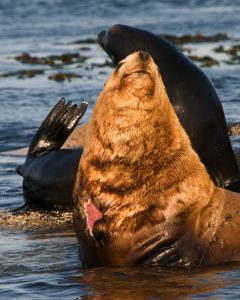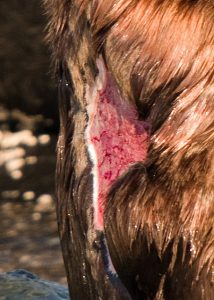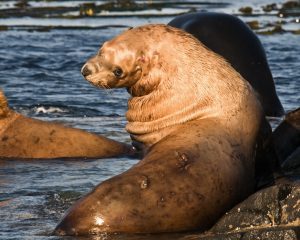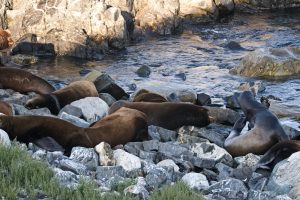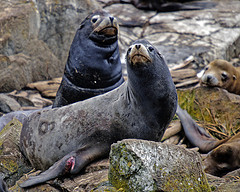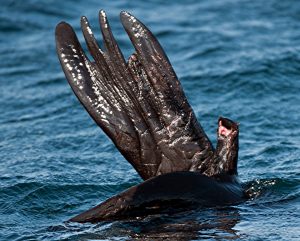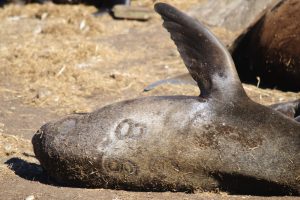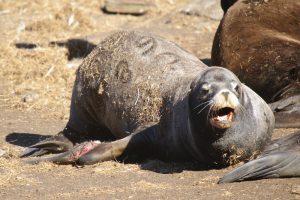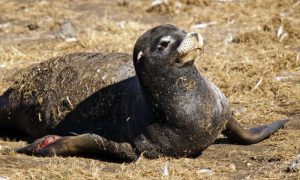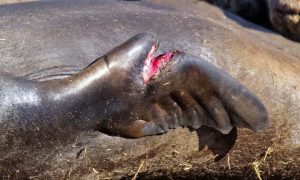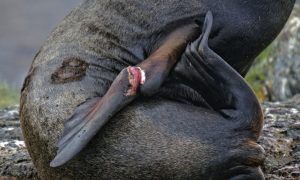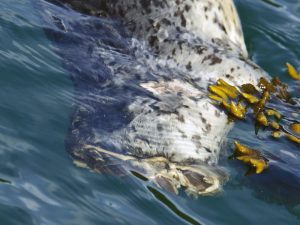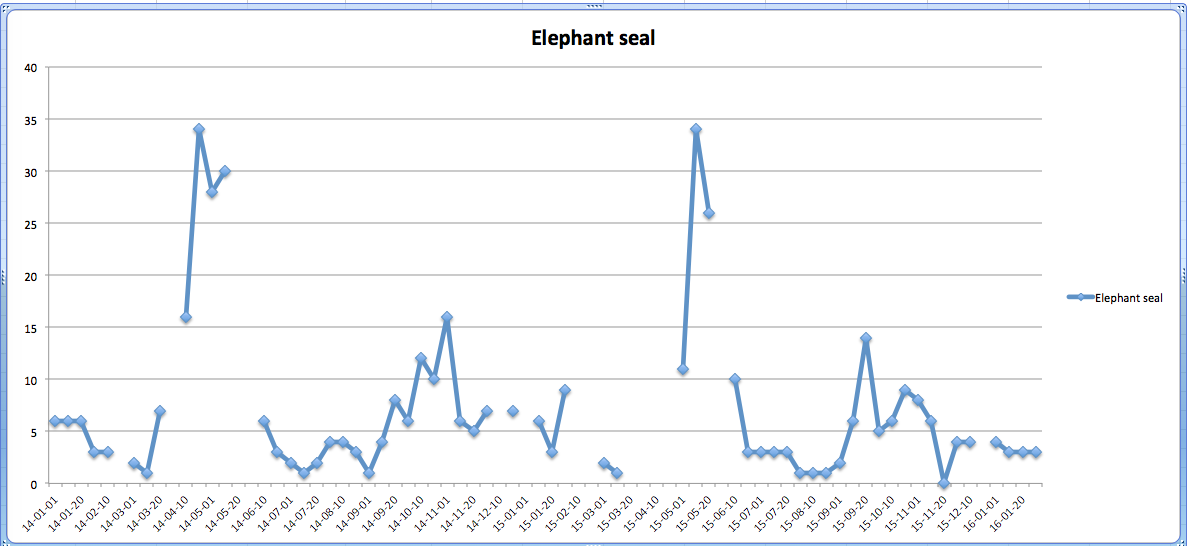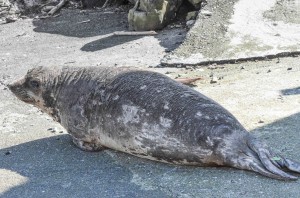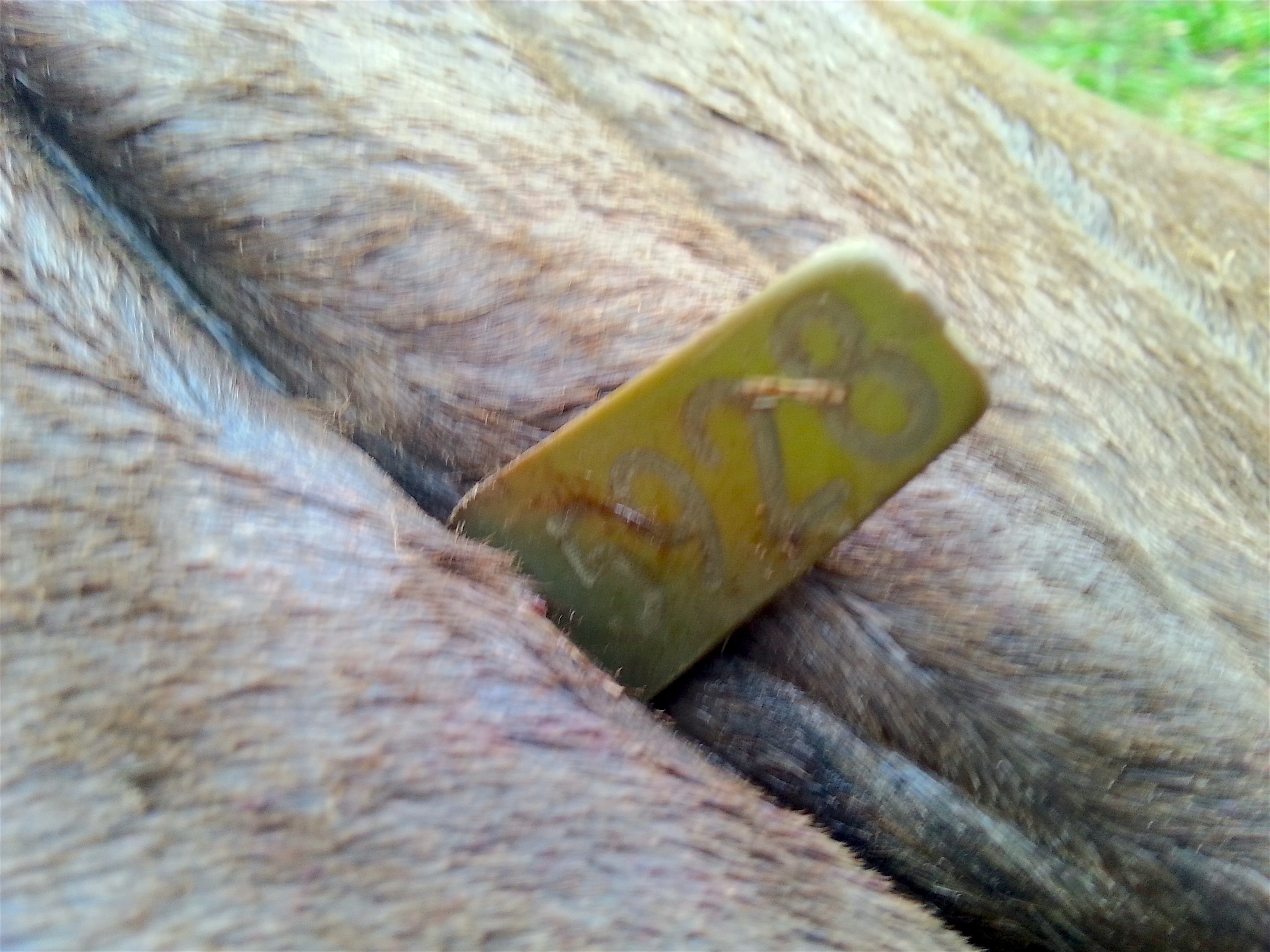Pam Birley sent this picture today that she took with the remote camera of Six-spot, a harbour seal she has photographed over a several year period. see previous post at https://www.racerocks.ca/6-spot-the-harbour-seal-observed-at-rr-since-2008/
Category Archives: Archived Video
Orcas and baby Seagulls
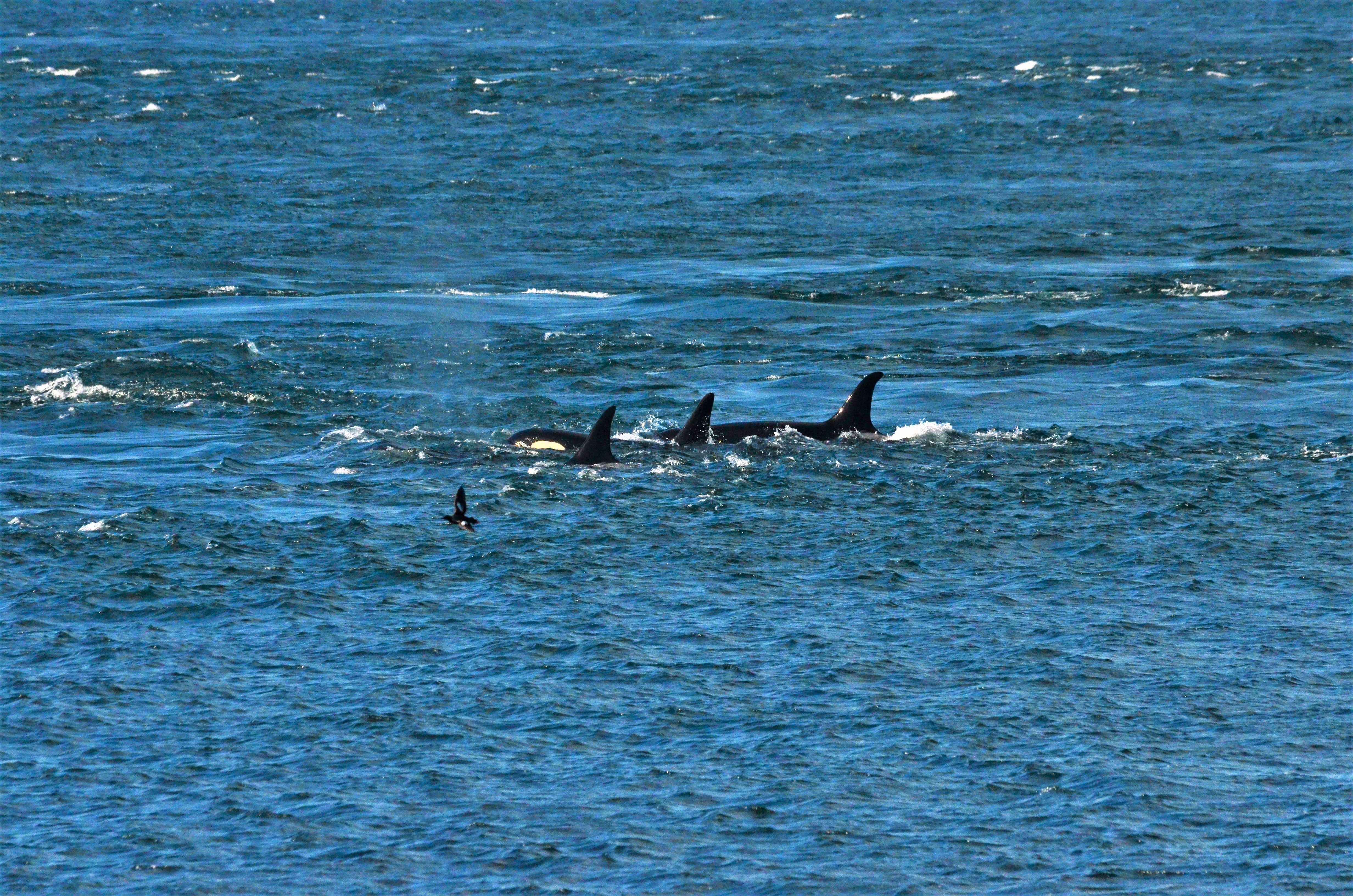
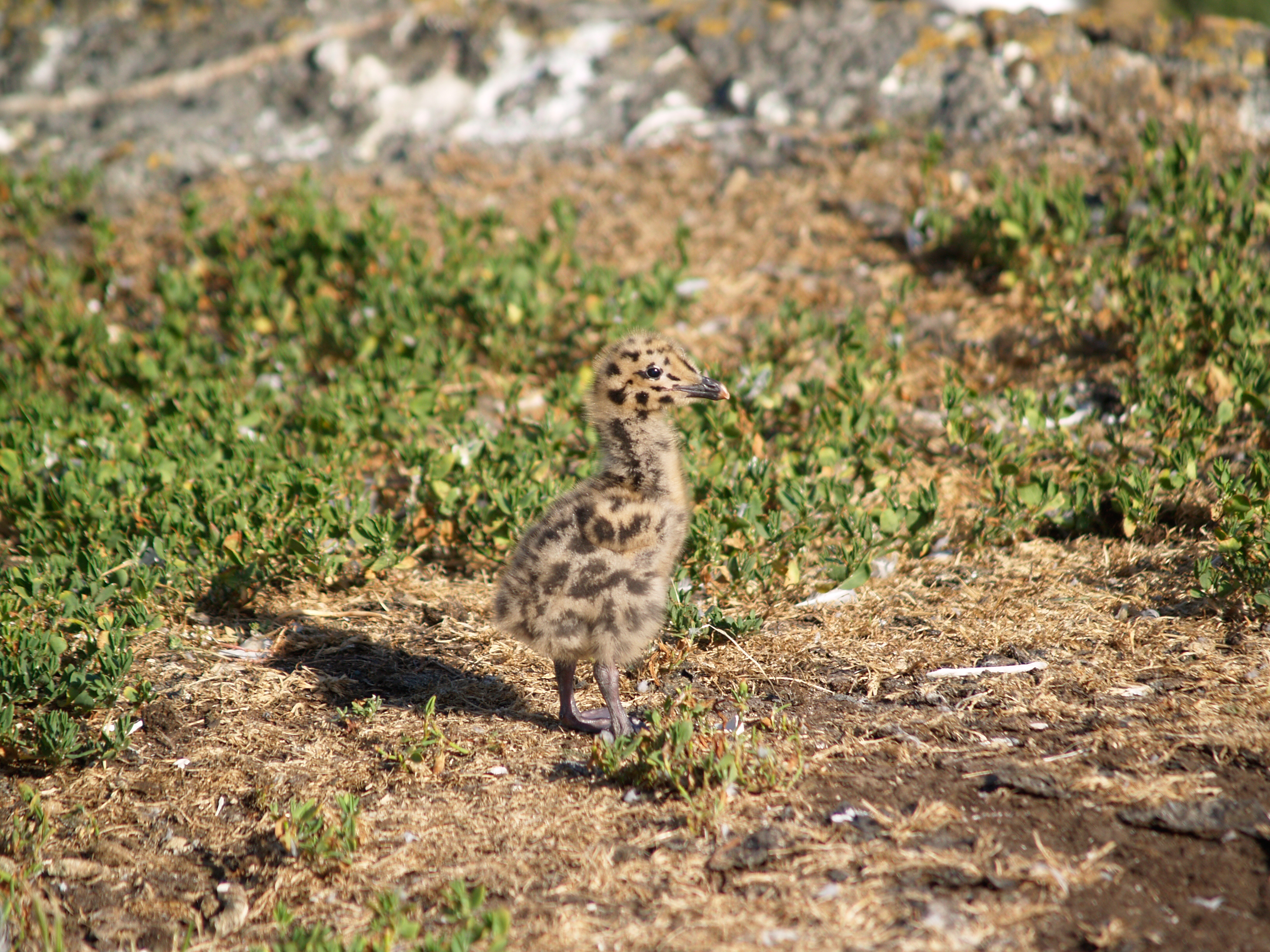
Corvus caurinus:NorthWestern Crow, Race Rocks Taxonomy
The Norhwestern Crow closely resembles the American crow being black noisy and having forward facing bristles above its nostrils. The nw crow is smaller in size and has a shorter lower caw. It also has a smaller bill, smaller wings and has a greater wing beat rate.They usually inhabit coastal areas such as Race Rocks and are not thought to be birds which migrate. The crow usually forages for food near coast lines and its diet may include dead fish, crab, mussels or clams. In most regions its nest may be located at high elevations or in the branches of Conifer trees. Here at Race Rocks, the closest suitable nesting sites are on Bentinck Island.
Domain Eukarya
Kingdom Animalia
Phylum Chordata
Subphylum Vertebrata
Class Aves
Order Passeriformes
Family Corvidae
Genus Corvus
Species caurinus
Common Name: NorthWestern Crow
Other Members of the Class Aves at Race Rocks.
and Image File |
 The Race Rocks taxonomy is a collaborative venture originally started with the Biology and Environmental Systems students of Lester Pearson College UWC. It now also has contributions added by Faculty, Staff, Volunteers and Observers on the remote control webcams. The Race Rocks taxonomy is a collaborative venture originally started with the Biology and Environmental Systems students of Lester Pearson College UWC. It now also has contributions added by Faculty, Staff, Volunteers and Observers on the remote control webcams. |
Original text by Lawson Connor, PC student Dec. 2002
All kinds of weather today
Weather
- Visibility: 15 Miles
- Wind: 20-25 SW in the early morning came down to nothing around noon and then picked up to 25 in the evening
- Sky: Cloudy, rained a little bit but was also very sunny at times
- Water: waves in the morning and then calm waters and then back up in the evening
Boats/Visitors
- a few ecotours while the weather was nice this afternoon
Ecological
- the 10 elephant seals I counted stayed scattered around the pathways and not just in front of the house
west wind
Weather: N wind in the morning under 10 knots becoming West wind at noon over 40 knots.
Ecological: Sent update report on injured elephant seal, she has become less responsive. Follow up communications about e-seal and possibility of intervention by VanAqua MMR.
Maintenance: starting to clean and pack in preparation for end of shift.
Branded sea lion
Gale Warning
Weather
At 5:00AM Wind:17 knots from West ,Visibility:8 to 10 miles,Sea:choppy. At 6:30 no wind and foggy :Horn on.Wind getting Southwest and raising later.Gale warning in effect for the night.Air temperature at 5:00:12.5 degrees celsius.and 9.5 at dew point.From 6:30 to 1:00 the horn has been honking despite the 18 knots wind.All the sudan it was pretty foggy on one West/North side but totally clear on the South side of the rocks and just the time to spot a humpback whale fishing around the green boyd:beautiful scenery.a little too far for good pictures.In the beginning of the afternoon we could observe some large patches of fog but later the wind picked up to 30 knots and no fog anymore for the day.
Ecological
When we had finished with the solar panel cleaning I went around looking for the nest Riley was speaking about,the one we couldn’t find with James the other day .Finally I found it with 2 eggs in it an by the way I discovered a hatching goose and the male close by.She was amazingly hidden and protected by 2 rocks and hard to see…so that means that we have 5 geese instead of 3 and maybe more pretty soon. Guy saw on South Rocks 5 huge Steeler sea lions and one had the word ROB on its left side.No time to get pictures ,they jumped hastily.
Did you have a look on the oystercatcher nest? beautiful especially by night !
I realized that I have seen no pelagic cormorants this year. 12 elephant seals in the morning on main ;none on the other Rocks.We will do the census as soon as the weather will be good enough.
Boats
7 to 10 eco-tour boats and the first one not before 11AM. Around 18:00 a big US coast guard vessel at the border line.
Maintenance
We restart the new camera connection.
Guy finished to repaired the starboard corner of the whaler :water infiltrations in the hule in that spot.
I brought to date the freezer. Windows need attention as soon as possible !
Human Impact on Sealions: Fishing Flashers, Entanglement, Boat strikes
In this post we have put together many of our references to the impacts that humans have inflicted on our California and Steller or northern sea lion population which hauls out at Race Rocks. It includes images of fishing flashers and entanglement in commercial fishing gear, especially plastic net-binding hoops, as well as examples of strikes by boats which have injured sealions, often resulting in limb amputations. It is our hope that the fisher community can be more aware of how harmful their actions or negligence can be on marine mammal populations.
FISHING FLASHERS:
We see this event all too often at Race Rocks. Fishers must take responsibility for removing fishing gear from the water when marine mammals are nearby. Not only is it expensive to loose equipment, the impact on these sea lions is uncertain. If the animal succeeds in breaking the leader for the flasher, then the animal only has to contend with the hook down in the stomach. It is not known how this effects sea lion mortality.
Entanglement in Commercial Fishing Plastic bindings on Nets.
This section shows plastic neck rings from commercial fishing nets around the neck of a sea lion.
Please write your Fisheries governing departments to request that all plastic bands used in the fishing industry for binding fish nets by made of biodegradable material.
| This northern (steller’s) sea lion showed up on Middle Rock in February of 2009 . Note the ridge formed by the ring toward the head end. Photo by Ryan | two neck rings and three brands appear in the same photo from the tower. GF | |
These two tags will bring up the other posts on Marine mammal Injuries and Entanglement.
See other photos from the excellent collection of Ryan Murphy on Flickr
Kimberly L. Raum-Suryana, , , Lauri A. Jemisonb, Kenneth W. Pitcherc
Elsevier: Volume 58, Issue 10, October 2009, Pages 1487–1495
Abstract
Entanglement in marine debris is a contributing factor in Steller sea lion (SSL; Eumetopias jubatus) injury and mortality. We quantified SSL entanglement by debris type, sex and age class, entanglement incidence, and estimated population level effects. Surveys of SSL haul-outs were conducted from 2000–2007 in Southeast Alaska and northern British Columbia. We recorded 386 individuals of all age classes as being either entangled in marine debris or having ingested fishing gear. Packing bands were the most common neck entangling material (54%), followed by rubber bands (30%), net (7%), rope (7%), and monofilament line (2%). Ingested fishing gear included salmon fishery flashers (lures: 80%), longline gear (12%), hook and line (4%), spinners/spoons (2%), and bait hooks (2%). Entanglement incidence was 0.26% (SD = 0.0064, n = 69 sites). “Lose the Loop!” Simple procedures such as cutting entangling loops of synthetic material and eliminating the use of packing bands can prevent entanglements.
BOAT STRIKES:
As the Northern (Steller) and California sea lions started to return to Race Rocks in the fall of 2009, Ecoguardian Ryan Murphy noticed what may be a significant increase in the number of encounters they have had with humans. Ryan took these pictures at the time.
- ” I cannot say for certain that it was one of the boats in the reserve that mangled this animal’s hind flipper,
- however, boat traffic in the reserve consistently gets too close to marine mammals both in and out of the water.” RM Aug 23,2009
- A gash on the chest
- The origin of this is difficult to say, perhaps a whale, shark or boat prop
- Boat prop scars on the back of this individual.
- Close up of the wound.
- Sept 26,2009 This california sea lion has a bad wound to the flipper.
- A decapitated harbour seal.
Marine Mammals Hauled out on Race Rocks Jan 2014-Feb 2016
This graph represents the 6 marine mammal species which haul out on Great Race Rocks in the Race Rocks Ecological reserve. providing the population numbers and the time of year CLICK to enlarge. The data was obtained from the Posts on census done by the Ecoguardians at Race Rocks.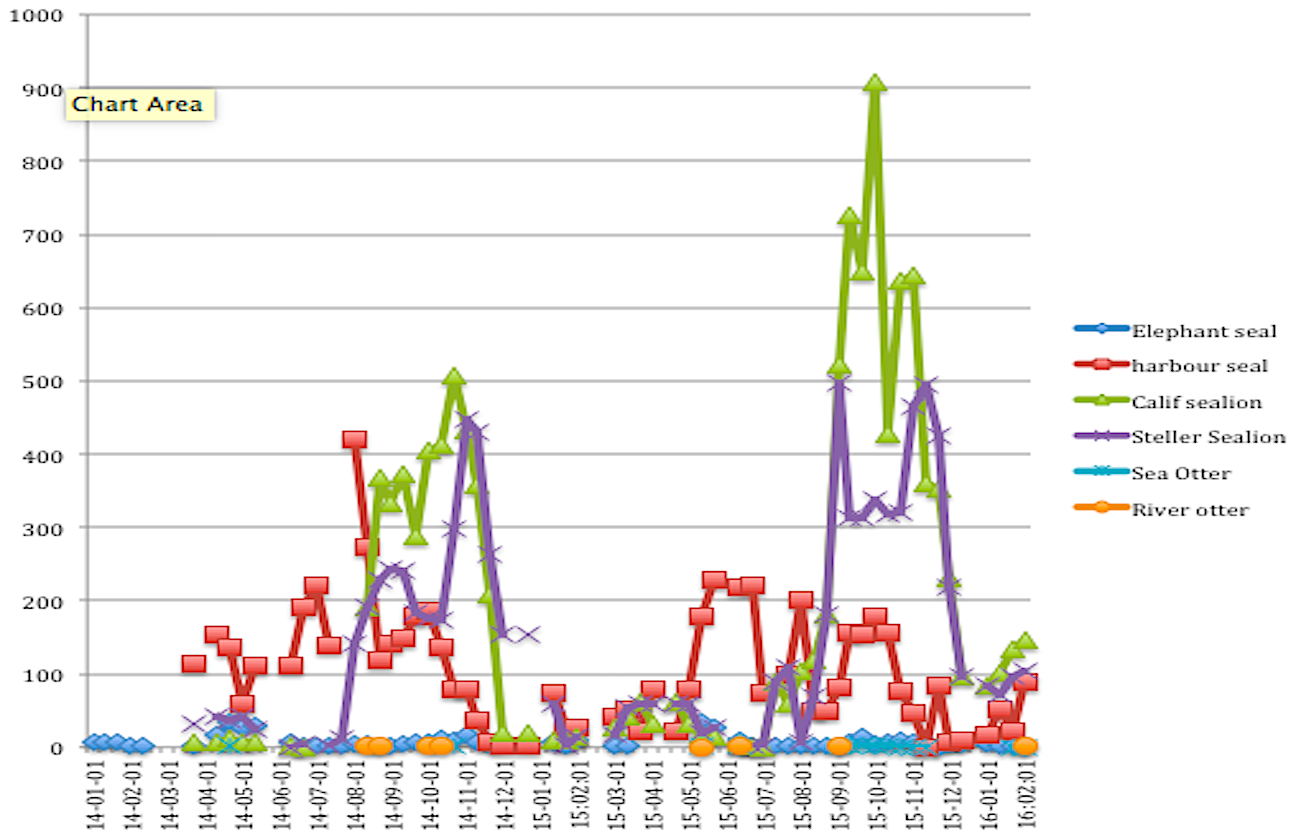
The graph below represents the Elephant seal population at Race Rocks Ecological reserve with data taken from the Ecoguardian logs for January 2014 to January 2016. Click to enlarge.
Female Elephant seal with tag #5928
The mother of the 4th pup born this year has a tag on her: This is quite significant as it is the first female to give birth on Great Race Island which has been tagged as a pup in California, probably in Ano Nuevo.

